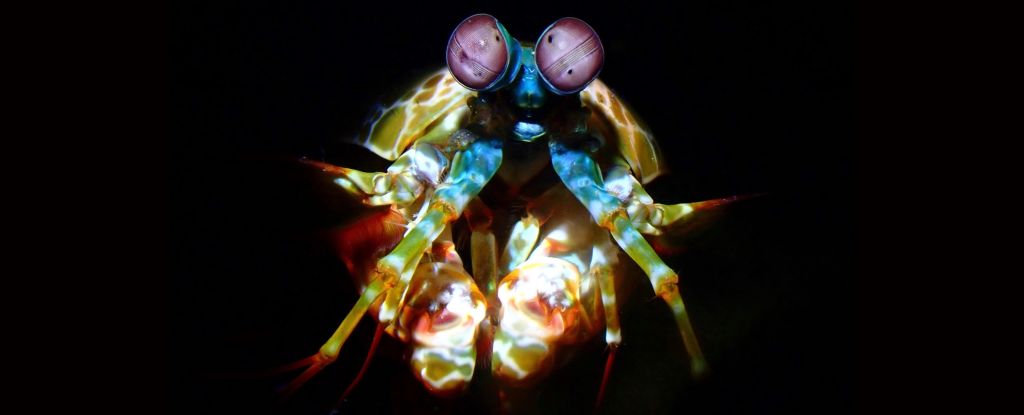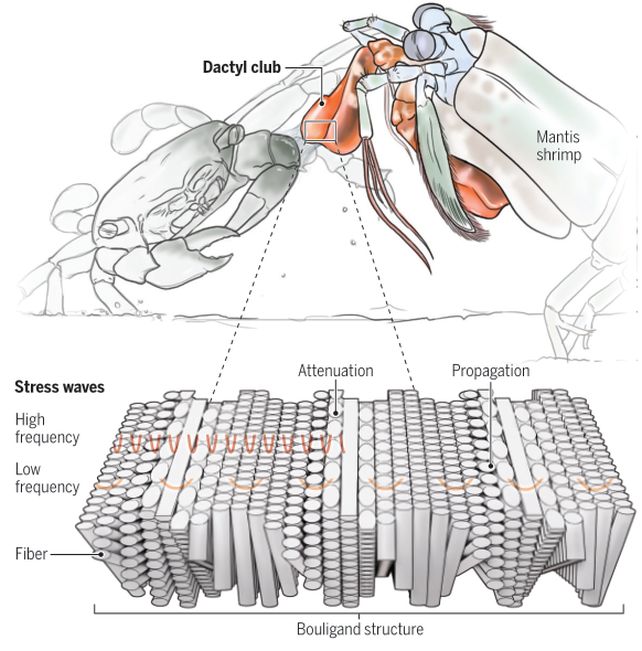
In the realm of the animal kingdom, few creatures can match the striking prowess of the mantis shrimp. This vibrant and compact crustacean unleashes an astonishing punch that reaches speeds of 23 meters per second, exerting a remarkable force of 1,500 newtons, capable of breaking the shells of its prey.
The intensity of these strikes has puzzled scientists, who have long considered how this formidable creature can withstand the recoil effects without sustaining injury.
Recent discoveries have shed light on one of its remarkable adaptations. The dactyl clubs, which deliver the mantis shrimp’s powerful blows, boast an intricate structure designed to absorb shocks, effectively shielding the animal from potential harm.
“The mantis shrimp is celebrated for its astonishingly forceful strikes, which can shatter mollusk shells and even aquarium glass,” explains mechanical engineer Horacio Espinosa from Northwestern University in the US. “To consistently perform these high-impact actions, the dactyl club must incorporate a robust protective mechanism that prevents self-inflicted damage. Traditionally, research has focused on the toughness and crack resistance of the club, viewing it primarily as a hardened impact shield.”
“Our findings reveal that it utilizes phononic mechanisms—structures that selectively filter stress waves. This design allows the shrimp to maintain its striking capability across multiple impacts without injuring its softer tissues.”
Researchers have diligently studied the impressive punch of the mantis shrimp. As it propels its limbs through the water at high velocity, it generates what is termed a cavitation bubble. This phenomenon occurs when the displacement of water reduces its density significantly, causing the water inside the low-density bubble to vaporize.
However, this bubble cannot survive for long in denser water; it instantaneously implodes, resulting in a release of heat, light, and sound.
This energetic release from the collapsing bubble helps crack shells and can even damage aquariums.
“Upon striking, the mantis shrimp creates pressure waves directed at its target,” Espinosa remarks. “It also produces bubbles that quickly collapse, generating shockwaves in the megahertz frequency range. The energy released during this bubble collapse travels through the shrimp’s club, intensifying the impact. The combination of this secondary shockwave effect and the initial force amplifies the devastation of the mantis shrimp’s strike.”
Remarkably, the mantis shrimp remains unharmed by these significant shock waves, which should theoretically radiate outwards in all directions.
To uncover the reason behind this resilience, a research team led by engineer Nicolas Alderete from Northwestern University conducted a thorough investigation of the dactyl clubs of the peacock mantis shrimp (Odontodactylus scyllarus), hoping to find insights that would explain this phenomenon.
They employed advanced techniques like picosecond laser ultrasonics and transient grating spectroscopy to examine how the shrimp’s armor responded to stress waves and discovered that the dactyl clubs possess a unique structure that effectively dampens and filters these stress waves, safeguarding the mantis shrimp.
The layered structure of the dactyl club’s armor was already known, resembling a lasagna. The outer impact surface consists of a delicate layer of hydroxyapatite, a mineral primarily made up of calcium and phosphorus, much like the coating on human teeth. Beneath this layer is a chitin fiber structure arranged in a herringbone pattern, enhancing its strength and stability.

Further beneath lies a layer of chitin fiber bundles organized in a corkscrew-like configuration, with each bundle rotated at a slightly different angle than its neighbors. This arrangement forms what is known as a Bouligand structure, recognized for enhancing resistance to fractures.
The researchers discovered that this layer also serves as a phononic bandgap barrier, filtering out sound and stress waves by guiding their interactions with the periodic structures of the material. The Bouligand structure within the chitin of the mantis shrimp’s dactyl club accomplishes this task effectively.
“The periodic characteristics of the material are pivotal in selectively filtering out high-frequency shear waves, which can be particularly harmful to biological tissues,” Espinosa elaborates. “This mechanism effectively shields the shrimp from damaging stress waves resulting from both direct impacts and bubble collapses.”
The team plans to conduct underwater experiments to evaluate the capabilities and limitations of this extraordinary armor, potentially paving the way for future advancements in bio-inspired materials.
The findings of this groundbreaking research have been published in Science.









